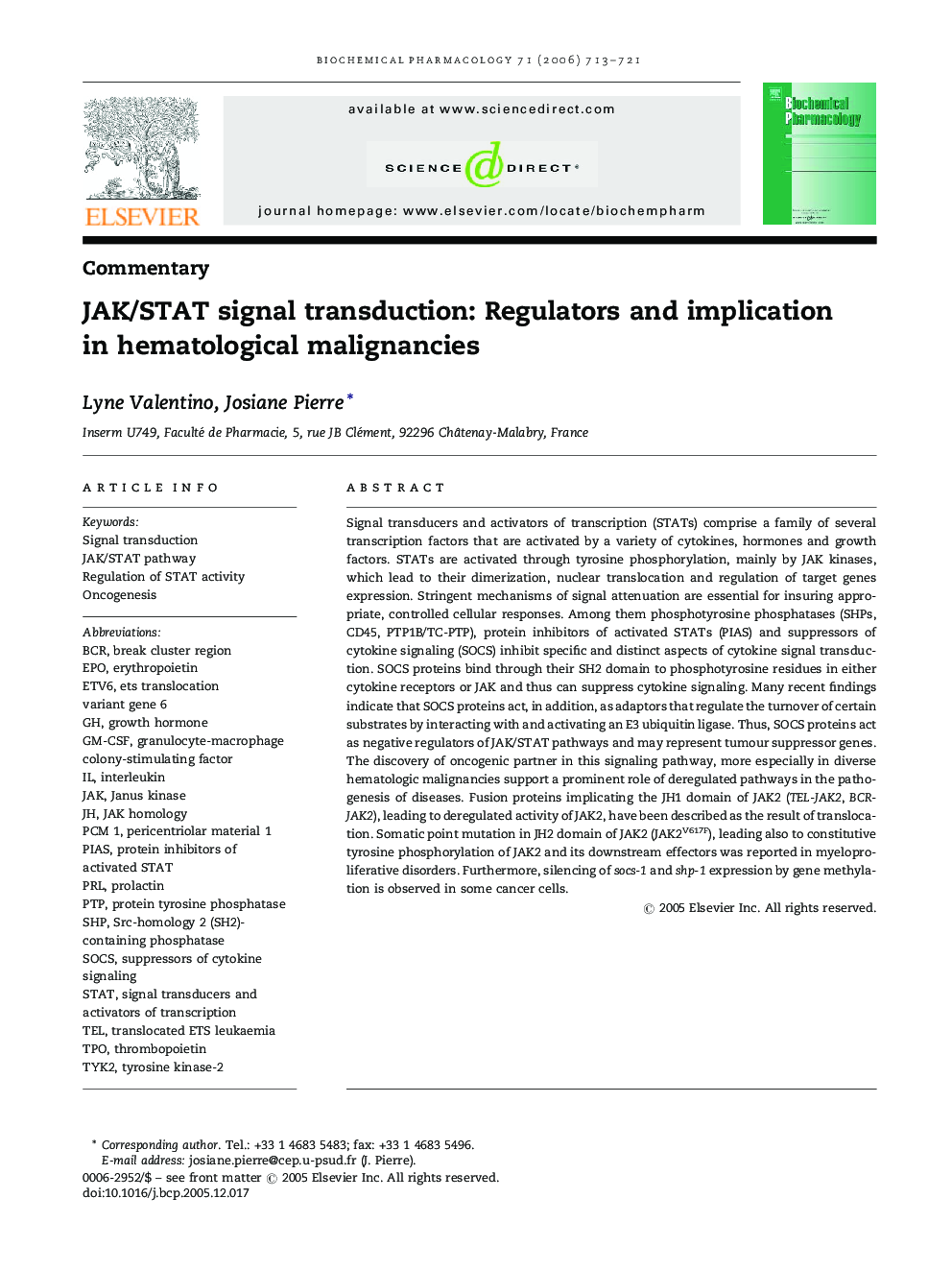| Article ID | Journal | Published Year | Pages | File Type |
|---|---|---|---|---|
| 2515576 | Biochemical Pharmacology | 2006 | 9 Pages |
Signal transducers and activators of transcription (STATs) comprise a family of several transcription factors that are activated by a variety of cytokines, hormones and growth factors. STATs are activated through tyrosine phosphorylation, mainly by JAK kinases, which lead to their dimerization, nuclear translocation and regulation of target genes expression. Stringent mechanisms of signal attenuation are essential for insuring appropriate, controlled cellular responses. Among them phosphotyrosine phosphatases (SHPs, CD45, PTP1B/TC-PTP), protein inhibitors of activated STATs (PIAS) and suppressors of cytokine signaling (SOCS) inhibit specific and distinct aspects of cytokine signal transduction. SOCS proteins bind through their SH2 domain to phosphotyrosine residues in either cytokine receptors or JAK and thus can suppress cytokine signaling. Many recent findings indicate that SOCS proteins act, in addition, as adaptors that regulate the turnover of certain substrates by interacting with and activating an E3 ubiquitin ligase. Thus, SOCS proteins act as negative regulators of JAK/STAT pathways and may represent tumour suppressor genes. The discovery of oncogenic partner in this signaling pathway, more especially in diverse hematologic malignancies support a prominent role of deregulated pathways in the pathogenesis of diseases. Fusion proteins implicating the JH1 domain of JAK2 (TEL-JAK2, BCR-JAK2), leading to deregulated activity of JAK2, have been described as the result of translocation. Somatic point mutation in JH2 domain of JAK2 (JAK2V617F), leading also to constitutive tyrosine phosphorylation of JAK2 and its downstream effectors was reported in myeloproliferative disorders. Furthermore, silencing of socs-1 and shp-1 expression by gene methylation is observed in some cancer cells.
